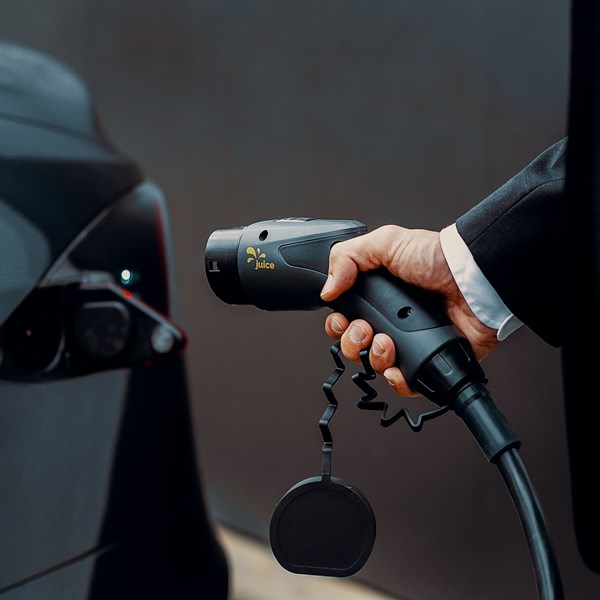In our latest article on Standard Essential Patents, SEPs, we look at the European Commission's, EC’s, proposed new framework for SEPs, feedback from stakeholders, and potential repercussions of the proposed framework on SEP owners and implementers.
HOW IS THE EC PROPOSING TO REGULATE SEPs?
With aims including “ensuring that both EU SEP holders and implementers innovate in the EU, make and sell products in the EU and are competitive on global markets”, the EC’s draft regulation contains the following building blocks:
- Establishment of a ‘Competence Centre’ at the European Union Intellectual Property Office, EUIPO, to administer the blocks below. Funding in this respect would be from fees paid by the users of the new system.
- SEP registration and essentiality checks: Establishment of an obligatory register where SEP holders record their SEPs (e.g., bibliographic data, essentiality information and non-confidential information on FRAND determinations). Selected SEPs are subject to an annual essentiality check (one per patent family and by evaluators who have expertise in the relevant technical field).
- FRAND determination: To help SEP owners and implementers agree on a FRAND licence. A FRAND determination period of maximum 9 months is mandatory before a SEP owner or an implementer goes to Court thus offering a safe harbour for negotiations without the threat of litigation or delaying tactics.
- SEP aggregate royalty rate: SEP holders and implementers may notify the expected maximum aggregate royalty to the Competence Centre. Alternatively, both SEP owners and/or implementers can ask a conciliator to recommend a (non-binding) aggregate royalty.
- SME support measures: Free advisory services. Reduced fees for registration of SEPs and for essentiality checks and access to the SEP register. Promoting more favourable FRAND terms and conditions for SMEs.
HOW HAS THE EC'S PROPOSED SEPs REGULATION BEEN RECEIVED?
Feedback from a variety of stakeholders has been largely critical. Examples include (all the feedback submissions received by the EC can be accessed here):
“As out-of-court dispute resolution mechanism[s] do not only exist already but are well established and accepted (e.g. those of WIPO, ICC and in future the UPC) the added value of another mechanism offered by the EUIPO is questionable.” (European Patent Institute (epi))
“The proposed Regulation will severely increase the costs for IP owners to participate in technical standardisation processes and SEP licensing. This would discourage RD&I actors such as universities and RTOs from participating in the process.” (European Association of Research and Technology Organisations (EARTO))
“The determination of an aggregate royalty, defined by the proposal as the “maximum amount of royalty for all patents essential to a standard” (article 2, no. 10), may at first glance seem to bring the predictability implementers require. However, the proposal for a regulation lacks further information on the methodologies that may be used by the appointed “experts” to determine a maximum royalty rate. Nor does it contain safeguards to ensure compliance with competition law.” (Avanci)
“Whereas the Commission speaks of transparency, Title V of the initiative does not explain how the Commission would determine essentiality. This raises a number of questions and concerns.” (IP Europe)
“[I]t does not address if and how any decisions of the competence centre would be appealed, or what would happen if a national court invalidated an SEP (thus requiring its removal from the SEP register pursuant to Article 26(1)(b) of the Draft Regulation), but such invalidation was then overturned on appeal.” (Former US officials)
“The regulation tries to do too much, with too little means, in a too short timeframe. (…) The reform jeopardizes European leadership.” (Ericsson)
As a leading owner of essential 5G patents, Ericsson’s views on this topic are likely to carry significant weight.
Elsewhere, the EC commissioned study Empirical Assessment of Potential Challenges in SEP Licensing did not find a strong case for significant intervention in the SEPs ecosystem, concluded in part:
“Existing empirical evidence on the causal effects of current SEP licensing conditions is largely inconclusive. Empirically observable outcomes do not indicate the existence of pervasive “opt-out” from standards-related innovation as a consequence of SEP licensing conditions; i.e. it does not appear that the observed challenges in SEP licensing are sufficiently severe as to systematically discourage potential contributors from participating in standards development, or discourage potential implementers from creating products that use technology standards subject to potential SEPs.”
It has also been recently reported that the EPO was not consulted on the proposed reforms.
Where stakeholders have welcomed the general idea behind the EC’s proposal (but consider that in its present form, the proposal does not meet its objectives), requests and recommendations for proceeding include:
“I fully support the commission’s aim to enhance transparency, but access to justice is a core fundamental right,” (Klaus Grabinski, chief judge of the UPC Court of Appeal)
“[T]hat the Commission further investigate the project [due to its technical and legal complexity], and consider further involving experts and competent authorities, including the Unified Patent Court (UPC).
(…)
[E]stablishing CLCMs [CL for crisis management] for European and unity patents be dealt with by a court that is also technically competent, such as the UPC, on the basis of a transparent legal and procedural framework.” (European Economic and Social Committee (EESC))
HOW COULD THE EC'S PROPOSED SEPs REGULATION AFFECT SEP OWNERS AND IMPLEMENTERS?
Given the importance of SEPs to the automotive and telecoms sectors, and increasingly to the IoT (i.e., sectors that support the digital backbone of the global economy), any intervention by the EC into the SEPs ecosystem is likely to have significant repercussions.
At the very least, since SDOs already have their own SEPs database (and given existing patent pools and ADR options), the proposed regulation could impart an undue administrative burden on standardization and licensing that hurts future spending on R&D and, ultimately, innovation.
There is also a question mark over whether the Competence Centre could be an effective and trusted administrator of the new framework, given the EUIPO’s lack of expertise on patents and FRAND licensing. At the present stage, seeking neither the EPO’s input on the proposed reforms nor harmonisation with the UPC also seems to lack coherence.
Territorial overreach is a further risk to SEP owners and implementers, as any precedents set by the EC on FRAND determination and access to justice could cause other jurisdictions to follow suit.
REMARKS AND OUTLOOK
In the absence of empirical evidence on the need for significant intervention into the SEPs ecosystem, the EC’s proposed SEPs regulation arguably attempts to solve a non-existent problem. This is before consideration of the proposed regulation’s (many) deficiencies that if enacted would likely damage the SEPs ecosystem, at least in Europe.
Nonetheless, the core objective of the proposed regulation - establishing a framework protection for transparent licensing of SEPs - is admirable. As such, a significant re-write of the draft regulation appears necessary based on an objective need for reform (once evidenced) and with input that ensures an appropriate balance of stakeholder interests. The legislative debate and the EC’s next steps over the coming years in this regard will be interesting to watch.
We will report further developments on the EC’s proposed SEPs regulation as they occur. To find out more about Standard Essential Patents and how IP can help you create commercial value from your innovations in the meantime, feel free to contact any of our electronics and computing team.






